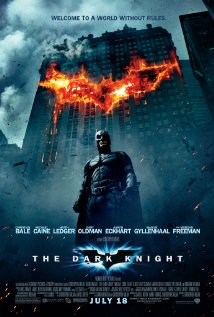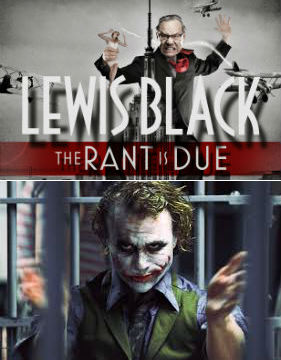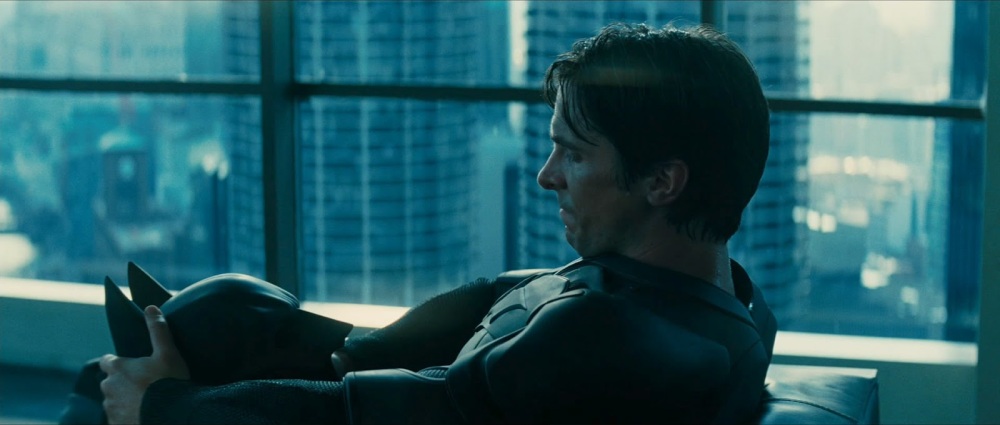 Christopher Nolan returned to the Batman mythos with the “Dark Knight,” following his cinematic reboot of the series, “Batman Begins,” possibly the most highly anticipated Batman film in a very long time. True to the title, “The Dark Knight” went to a darker place than any Batman movie prior.
Christopher Nolan returned to the Batman mythos with the “Dark Knight,” following his cinematic reboot of the series, “Batman Begins,” possibly the most highly anticipated Batman film in a very long time. True to the title, “The Dark Knight” went to a darker place than any Batman movie prior.
Undoubtedly, in every way, this movie belongs to Heath Ledger and his demented version of the Joker. Yes, it’s a Batman film, and he is the protagonist, but everything about it revolves around his most famous foe. It’s impossible to separate the legacy of this film from Ledger and the tragedy of his death during production. He went out with one hell of a performance.
The Joker is easily this film’s greatest strength, but in a way also its greatest weakness. This will certainly go down as one of the great performances in the history of film, as Ledger completely transforms himself into this evil, manic, super villain (basically, he’s Lewis Black) that’s so far removed from any of his other roles. This isn’t your grandfather’s Joker (especially if your grandfather is Jack Nicholsen). He didn’t just put on some clown makeup and prosthetic and ham it up a la Cesar Romero. He crafts a memorable character that permeates the entire film, even many moments where he isn’t even present. The Oscar he won for best supporting actor (which could have just as well have been best actor) was well-deserved.
The Joker looms over the entire movie. His schemes are so pervasive and unpredictable that they continually send the city into panic, as well as Bruce Wayne (Christian Bale) and all the people he loves. He’s the antithesis of the honorable and principled Bruce, as he has no ulterior motive for the chaos he perpetrates, other than that he seems to find it amusing, and he is entertained by the conflict it creates between himself and the Caped Crusader. He’s a master of manipulation, and he gets into the head of everyone who crosses his path. That’s evident whenever he talks about how he got the scars on the sides of his mouth that create a permanent, unsettling smile. Every time he tells the story, it’s something completely different.
The downside to the Joker is that he overshadows everything else in the movie. Part of that is due to the rather bland plot and shallow character arcs. But it seems like Nolan knew what he had (The Joker) and ran with it as far as he could. It would have been nice if he would have put more effort into everything else.
The movie starts with a cracking bank heist, which serves to build the Joker character splendidly. This isn’t like many bank robberies where the criminals assure everyone that everything will be alright if they just cooperate. The Joker’s henchmen force several of the bank’s patrons to hold grenades while they do their work. One by one as each henchman completes his assigned task, another one eliminates his fellow crook until the only one left is the man himself. It makes you think that word would get around that he doesn’t share his bounty with his underlings and that working with him won’t get you anywhere good. But then again, he proves throughout the film how manipulative he can be.
Then there’s a scene of Batman breaking up a meeting of one of the villains from the last movie, the Scarecrow’s (Cilian Murphy), but also running into a couple wannabe Batmans wearing hockey pads. That shows the film is still grounded in relative reality, as there probably would be copybats if a guy starting rolling around in a military vehicle beating up bad guys. It’s a nice touch.
But then, the movie moves into a rather vapid scheme that has something to do with Chinese investors. It serves no real purpose, other than to formally introduce the Joker and give Batman an excuse to execute a cool Mission Impossible-style black ops type of mission to nab the leader.
But then, the Joker’s only plan seems to be to mess with Batman and the people of Gotham, albeit in rather demented ways. The fear the Joker creates makes provides the film with urgency, as he promises to start killing important people around the city until he can meet with the Batman.
In a weird casting snafu, Maggie Gyllenhaal takes over the role of Rachel from Katie Holmes who played her in the first movie. It’s always strange when a character has a new actor. In this case, however, it is a welcome change as Gyllenhaal is a much more versatile and charismatic actress. In fact, Gyllenhaal is very convincing in showing that she should have had the part from the beginning. Rachel suddenly shows off a stronger, sassier, more vibrant attitude that she didn’t have before.
Which is a bit of a shame, because the character is basically fodder for Bruce and District Attorney Harvey Dent (Aaron Eckhart) and the Joker to fight over. Her new boyfriend, the Eliot Spitzer-esque (pre-high class escort scandal) Dent is here to clean up the corruption in the city, even though it seems Batman really does all the heavy lifting. Naturally, the Joker is here to upset the balance of normalcy in Gotham. By doing that, he kidnaps Rachel, leading Dent and Bruce, who still pines for her, to launch a full-scale campaign to get her back. It doesn’t go well, she winds up dead. Dent winds up horribly disfigured. All hell breaks loose. Cats and dogs living together, etc.
Bruce is shaken up, as he still loved Rachel, and he thought Dent could basically take over the mantle of the city’s hero because he really doesn’t want to do the Batman thing anymore based on a rather foolish promise she made back in the first movie when she was still Katie Holmes. It leads him to wonder what all this Batman nonsense was for in the first place. That’s kind of a weird crisis to have, considering the whole costumed crusader thing seemed like a pretty bad idea in the first place.
If he really wanted to help the city, then as the resident stinking rich guy, instead of rolling around the city blowing up shit with a military grade vehicle or gallivanting around on a yacht with the Russian ballet, maybe he could have invested some of that money in the city’s infrastructure with jobs creation and welfare. Let’s face it, the Batman thing is cool and all if you wanna make a movie about it or something. It was useful in rooting out some of the criminals who were running the city before and in dealing with weirdos like Scarecrow, Ra’s al Ghul and the Joker. But when it comes to providing the city what it really needs, a caped crusader is probably pretty low on the list. Trying to pass his legendary figure status off onto Harvey, who didn’t do as much as Batman seems like an odd way to go about things.
Once Harvey’s got half his face scalded off, he starts going about things in a rather odd way himself. Though his transformation into the popular villain Two-Face makes for some fun moments, including killing Eric Roberts (whose presence is always more than welcome in any thriller movie), it feels like his character is wasted. As he’s lying in his hospital bed, explaining to Commissioner Gordon (Gary Oldman) that he’s going to be the “Harvey Two-Face” the police always thought he was, it might make the viewer wonder why where that Harvey Two-Face was hiding earlier in the movie. There’s one scene where he threatens to kill a henchman of the Joker’s because Rachel has gone missing, but that’s it. Two-Face was a fascinating character in other Batman stories, who recognized that most things in life happen by chance, and so he made all of his decisions by flipping the two-headed coin he carried around with him. As it is in the film, he goes rogue for no other reason than his Rachel’s death. It just makes him seem whiny rather than a man who had been teetering on the edge and just got pushed over. There’s nothing before his transformation to show that he might have had an anger issue or at his coin-operated decision making skills. He basically just came off as a goody two-shoes who is willing to get a little bit of dirt on his hands, but not too much, to get the jobs done. It’s OK that the movie character didn’t live up to the one in say, the Animated Series, because a movie should be able to stand on its own apart from its source material. But it’s a problem that in a movie going for a realistic vision of a super hero tale, that the way his character progresses isn’t very logical, as well as only being based on what happens to his woman. Eckhart is a capable actor who could have handled the character’s nuances, but his talents are wasted here. In every way, Two-Face falls flat.
Then there’s the whole thing with the Joker and his social experiment with the two ferries. First of all, to clarify, Tiny Lister is always fun to see, and he’s fun here too. But the whole episode is pretty bad. It is interesting that the Joker put those two boats in a dilemma where he was giving each one the chance to blow up the other, but if neither did it by a certain time, he would blow both up. That’s a great scheme. So much time is spent on both ships, neither of which holds any characters relevant to the story outside of this incident, and considering the film didn’t take enough time to develop some of its principal characters, it’s unnecessary.
The way the situation is set up, one boat is full of regular civilians, but the other carries prisoners. The way the direction of the movie went, it’s unsure whether the audience is intended to believe the prisoners are simply evil criminals or a more realistic view where many people in prison are in their predicament due to a combination of a bad hand dealt to them in life and some unfortunate choices they made in difficult situations (probably the former). What Nolan seems to be trying to show with this is that it’s easy for people to say these “criminals” don’t deserve to live, but it’s not easy for even the most self-righteous person to be the executioner. Based on everything surrounding the events of the last few months in Ferguson, Missouri, none of that seems to be true of real people. It doesn’t take much wrongdoing in some people’s eyes to see another person as a criminal who deserves to be executed. That’s a biased viewpoint that likely comes from prejudices, often based on race, as well as gender, sometimes on social status. Over the last year, it seems like people, and especially police, have been pretty quick to pull the trigger just because they don’t like the people around them. It doesn’t appear to be a difficult decision for those people. This episode shows that Nolan views the world through rosier glasses. In a way, prisoner Tiny Lister’s grand gesture of throwing his ship’s detonator out the window is an acknowledgement that he and the other prisoners do deserve to die, because they already had their chance in life, and those “normal” people shouldn’t have to suffer for that. This film is seven years old, so of course it couldn’t have accounted for events within the past year, but in today’s climate, it sends a condemning message about people labeled as criminals that has ugly implications. And besides, police violence isn’t really a new thing, it’s just that people who knew the victims are now fed up with it and working to get people’s attention.
The movie also takes advantage of some of the political happenings in the years leading up to its release, mainly regarding things that happened under President George W. Bush’s time in office. When the Joker kidnaps one of the Batman wannabes, he records a video that resembles the ones made by al-Qaeda that surfaced on the Internet, which depicted the terrorists beheading prisoners. Batman creates a surveillance network tapping into people’s cellphones to pick up surrounding audio, which Q Lucius (Morgan Freeman) decries as being too invasive of privacy, resembling the Patriot Act and now recalling the Edward Snowden-NSA scandal. The Joker uses one of the Arkham patients as a suicide bomber, essentially. The Joker’s use of fear tactics and his assassination of several political figures creates a sense of paranoia around the city and Harvey gives a speech that recalls Bush’s push to return to “normalcy,” and Gotham has always represented New York, which obviously was the site of 9/11. Even the mostly useless plot about the Chinese contractors makes some connection to real world events. Perhaps it was an attempt by Nolan to be “edgy” or to make social commentary, but the terrorism related elements come off as kind of exploitative in hindsight for those who have knowledge of the state of the world back then. Maybe in 2008, those images helped to evoke feelings of fear in the audience by association. Then again, maybe to future audiences, those elements will simply come off as effective and disturbing to those who weren’t privy to those times. The inclusion of those images seems unnecessary though to someone who remembers those events clearly.
This movie will always be linked to Ledger’s death. Though it leaves a remarkable legacy for him, it does bring into question the type of method acting where actors try to get inside the head of the characters they are playing. Knowing how he died makes it appear likely that this role was probably a key factor in his death. He had to go to a very dark place psychologically to understand this version of the Joker. Maybe it was too much for him to handle. Assuming that’s true, you can say stupid things like he died doing what he loved and all that. But he loved acting, and you can’t act when you’re dead. There will be so many spots in so many movies that he could have filled. Although he received critical acclaim previously for “Brokeback Mountain,” this was undoubtedly a breakout role for him that would have catapulted his career to new heights. But he didn’t survive it, so the world will never know what could have been. Who knows for sure everything that led to his death, especially as it sounded he was reclusive in those final days? But a role in one movie isn’t worth a person’s life. There probably never will be another character as demented as Nolan’s Joker, though Jared Leto has already been cast for “Suicide Squad,” but that Joker probably won’t be quite as far out there as this one was. The last the world will see of Ledger under the makeup will be the character hanging upside down prophesying to Batman “I think you and I are destined to do this forever.” It’s sad that sentiment won’t be true.
The Joker on his own makes “The Dark Knight.” This is the first of Nolan’s movies where it seems like all the separate elements he’s working with don’t really blend into a good cohesive whole. The Joker is the glue that holds everything together, but although the Joker works remarkably well all-round, he’s really the only thing that works. But that’s good enough to recommend to the few people who might not have seen this movie by now to check it out. In reference to my larger, ongoing project, it wouldn’t be surprising to see this movie on the AFI’s next 100 Movies list thanks almost entirely to Ledger. If there is any director that would be a lock for a new entry onto the list, it would have to be Christopher Nolan. If this movie doesn’t make it, perhaps it will be the one that followed this one. Next time let’s take a look at “Inception.”






